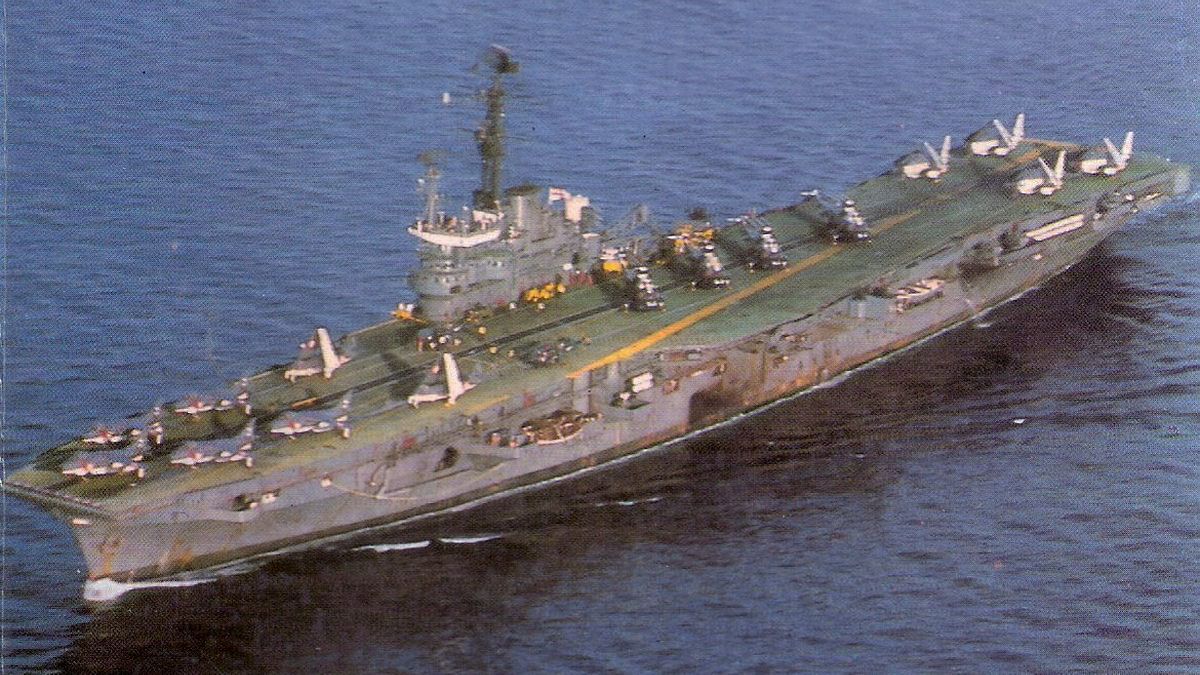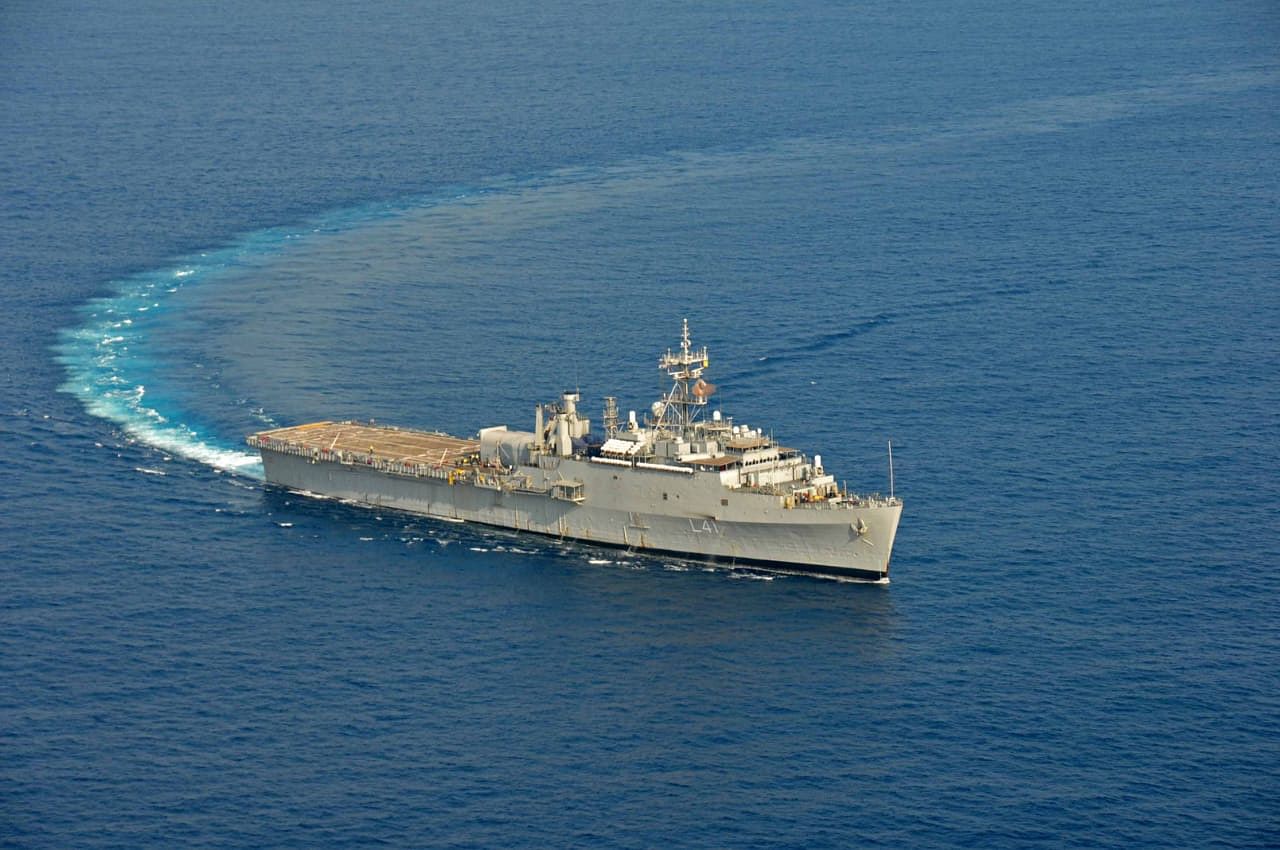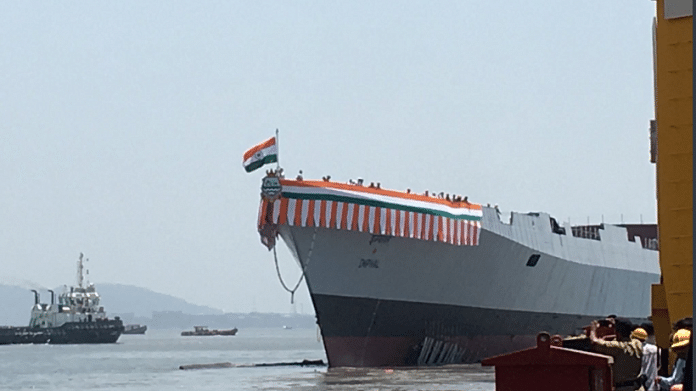New Delhi: Last weekend, the Indian Navy launched a stealth guided-missile destroyer, called INS Imphal. It is the third ship of the Visakhapatnam class, and will be commissioned by 2023.
This is the first instance of an Indian Navy ship being named after a city from the country’s Northeast.
Nongthombam Biren Singh, the Chief Minister of Manipur, thanked the central government for recognising the role of state capital Imphal as a major battleground during World War-II
In recognition of Imphal being the major battle ground during WW-II, the Indian Navy launched a Guided Missile Destoyer “INS IMPHAL”. I on behalf of the people of Manipur appreciate the GOI for the befitting recognition. pic.twitter.com/v4DlM4RNLK
— N.Biren Singh (@NBirenSingh) April 20, 2019
ThePrint looks back to how the names of the Indian Navy’s vessels have evolved over the decades.
How does Indian Navy name its vessels?
The Internal Nomenclature Committee (INC) at the Ministry of Defence is responsible for naming ships and submarines. The Assistant Chief of Naval Staff heads the INC, and other members include representatives from the historical section of the ministry and the archaeology department of the human resource development ministry.
“It is a very good tradition to name our ships and submarines after the various aspects of the Indian republic,” former Chief of the Naval Staff Vishnu Bhagat told ThePrint. “Naming ships in this fashion allows us to address the diversity of India. The naming of INS Imphal makes me happy — it is great that we have finally named a ship after a city in India’s Northeast.
“Back when I was serving, I wanted to name a ship after Kashmir, but the government did not allow me to do so.”
Bhagat said ships are often named after previously decommissioned vessels.
To maintain uniformity among vessels of a certain type, the INC adheres to certain policy guidelines. For instance, aircraft carriers get abstract names, frigates are named after mountain ranges, rivers or weapons, and corvettes are named after personal arms.
The ships and submarines listed below include the ones that were used by the Indian Navy after Independence. Some of them belonged to the British-era Royal Indian Navy, and were inherited by independent India.
Aircraft carriers
Belonging to the Majestic class, INS Vikrant was India’s aircraft carrier. INS Viraat of the Centaur class followed it. India’s only active aircraft carrier, the INS Vikramaditya, belongs to the Kiev class.

Also read: Indian Navy to get 56 new warships in next 10 years, including third aircraft carrier
Destroyers
All the destroyers of the Indian Navy are named after important cities, or historical Indian warriors, or rivers.
Historic destroyers included INS Rajput, INS Ranjit, and INS Rana from the R class. After the R class, a Hunt class was commissioned, which included INS Godavari, INS Gomati, and INS Ganga.
The Indian Navy currently has three active classes of destroyers. The Kolkata class stealth guided-missile destroyers include INS Kolkata, INS Kochi and INS Chennai.
There are two classes of guided-missile destroyers. These include INS Delhi, INS Mysore, and INS Mumbai from the Delhi class, and the INS Rajput, INS Rana, INS Ranjit, INS Ranvir and INS Ranvijay from the Rajput class.
Frigates and cruisers
Both the frigates and cruisers are named after mountain ranges, rivers or personal weapons. Initially the Indian Navy used frigates of the River class, which it inherited from its colonial predecessor. These frigates included HMIS Kukri, HMIS Bengal, HMIS Hooghly and HMIS Tir.
Between 1959 and 1985, the Navy commissioned five classes of frigates. INS Khukri, INS Kirpan and INS Kuthar belonged to the Blackwood class. INS Talwar and INS Trishul from the Whitby class followed later.
The next class of frigates to be commissioned was the Leopard class, which included INS Brahmaputra, INS Beas, and INS Betwa. The Nilgiri class followed Leopard and included INS Nilgiri, INS Himgiri, INS Udaygiri, INS Dunagiri, INS Vindhyagiri and INS Taragiri.
INS Krishna belonging to the Leander class, which was then followed by INS Godavari and INS Ganga from the Godavari class.
The Indian Navy also used two cruisers in the past: INS Delhi and INS Mysore.
All the above mentioned frigates have since been decommissioned.
India’s active frigates comprise of four classes: the Shivalik class (INS Shivalik, INS Satpura, and INS Sahyadri), the Talwar class (INS Talwar, INS Trishul, INS Tabar, INS Teg, INS Tarkash and INS Trikand), the Brahmaputra class (INS Brahmaputra, INS Betwa, and INS Beas), and the Godavari class with INS Gomati.
Out of these, the Shivalik and Talwar classes are stealth guided-missile frigates, while Brahmaputra and Godavari are guided-missile frigates.
Corvettes
Corvettes are named after personal arms. Right after Independence, the Indian Navy inducted the Bathurst class from the Royal Navy. These corvettes included HMIS Punjab, HMIS Bombay, HMIS Bengal and HMIS Madras.
Then came the Flower class, and then the Arnala class, the first set of corvettes to be commissioned by independent India. This class included the INS Arnala, INS Andorth, INS Andadip, INS Andaman, INS Amini, INS Kamorta, INS Kadmatt, INS Kiltan, INS Katchall, and INS Amindivi.
The Durg and Veer classes followed the Arnala class. The Durg class included INS Dosdurg, INS Vijaydurg, INS Sindhudurg, while the Veer class included INS Prahar, INS Veer, and INS Nipat.
The Indian Navy also inherited anti-submarine naval trawlers from the Royal Navy. Belonging to the Basset class, these trawlers were then renamed based on Indian cities. Some of the trawlers in the Basset class were HMIS Agra, HMIS Ahmedabad, HMIS Amritsar, HIMS Cuttack, HMIS Lucknow etc.
India’s active corvettes belong to five different classes.
The Kamorta class is the stealth anti-submarine warfare corvette, and includes INS Kamorta, INS Kadmatt, and INS Kiltan.
The other four classes are the Kora class (INS Kora, INS Kirch, INS Kulish, and INS Karmuk), the Khukri class (INS Khukri, INS Kuthar, INS Kirpan, and INS Khanjar), the Abhay class (INS Abhay, INS Ajay, and INS Akshay), and the Veer class (INS Nishank, INS Vibhuti, INS Vipul, INS Vinash, INS Vidyut, INS Nashak, INS Prabal, and INS Pralaya).
Minesweepers
India’s ocean-going minesweepers are named after Indian regions or states. The Indian Navy inherited the Bangor class of minesweepers from the Royal Indian Navy. The Bangor class included HMIS Orissa, HMIS Khyber, HMIS Carnatic, HMIS Kumaon etc.
The first set of minesweepers commissioned after independence were the Pondicherry class, which included INS Porbandar, INS Bedi, INS Bhavnagar, INS Ratnagiri, INS Cuddalore and INS Konkan etc.
Coastal minesweepers included the Ton and Mahé classes. The Ton class comprised of INS Cuddalore, INS Cannanore, INS Karwar, and INS Kakinada, while Mahé included INS Mulki, INS Magdala, INS Malvan, INS Mahé etc.
Inshore minesweepers came from the Ham class and included INS Bassein and INS Bimlipatan.
Fast attack ships
India’s fast attack ships are named after words that denote bravery, victory and valour. Historically, there were two classes of fast attack missile boats — the Vidyut and Chamak classes. The Vidyut class comprised of INS Veer, INS Nirbhik, INS Nipat, INS Nirghat, INS Vinash etc. The Chamak class included INS Pratap, INS Charag, INS Prachand, INS Prabal, INS Chatak etc.
Amphibious warfare ships
Indian Navy’s amphibious ships are named after ferocious animals or amphibians. Older amphibious landing ships carried names such as INS Gharial and INS Guldar from the Polnocny class, and INS Ghorpad, INS Kesari, INS Shardul, INS Sharab, and INS Mahish from the Kumbhir class.
The landing ship infantry was comprised of the Shardul class, and included INS Shardul, INS Kesari, and INS Airavat.
India currently has one active amphibious warfare ship, INS Jalashwa of the Austin class. There are also 16 landing ships and crafts.

Today, India’s landing ships include the new Shardul class with INS Shardul, INS Kesari, and INS Airavat, the Magar class with INS Magar and INS Gharial, and the new Kumbhir class with INS Cheetah, INS Guldar, and INS Kumbhir.
Landing crafts belong to the Mk III LCU and Mk IV LCU classes — with names such as INS LCU 38 and INS LCU 51 respectively.
Patrol vessels
India’s multi-purpose patrol vessels are named after islands, while offshore patrol vessels have names from Indian mythology.
Initially, the Indian Navy’s patrol vessels came from the Trinkat class.
Today’s active patrol vessels belong to the Car Nicobar class (INS Car Nicobar, INS Chetlat, INS Kora Dovh, INS Koswari etc.), the Bangaram class (INS Bangaram, INS Bitra, INS Batti Malv), and the new Trinkat class with INS Trinkat.
The first batch of India’s offshore patrol vessels were inherited from the Royal Indian Navy and had names such as HMIS Ramdas, HMIS Jamnagar, HMIS Hiravatai, HMIS Prabhavati etc.
Now, active offshore patrol vessels belong to the Saryu and Sukanya classes — INS Saryu, INS Sunayna, INS Sumedha, INS Sumitra of the Saryu class, and INS Sukanya, INS Subhadra, INS Suvarna, INS Savitri, INS Sharada, and INS Sujata of the Sukanya class.
Submarine fleet
The submarines of the Indian Navy are named after predatory fish or abstract names associated with the ocean.
India’s nuclear-powered ballistic missile submarine is called INS Arihant, and belongs to the Arihant class. The nuclear-powered attack submarine is called INS Chakra and belongs to the Chakra class.
Conventionally-powered submarines come from three classes: the Kalvari class includes INS Kalvari, the Sindhughosh class includes INS Sindhughosh, INS Sindhudhvaj, INS Sindhuraj etc., and the Shishumar class includes INS Shishumar, INS Shankush, INS Shalki and INS Shankul.
Also read: What is Project 75 India & what it means for Indian Navy




Did they use old hull plate from theMumbai ship breakers or was this new missile destroyer chisled out of a solid block of steel.???
Not Dosdurg please. The correct name was INS HOSDURG, named after a fort in Karnataka.
Why this article, just because Rhea Verma filed a suit against Modi Govt? Here Govt. should be charged for both these cases, one is overlooking Vice Admiral Vimal Verma, second why Govt. allowed her stay if it is illegal.
We all need path correction. Someone with least approach is in waiting for that accomodation and he has awaited for long
Might is right in India, let it be Armed forces or civil services.
Complements for a superb article. Most of us are not familiar, with how Indian Navy christens it’s ships and destroyers. Made up for an interesting story. The names simply mesmerize and create an awe of our naval power.
A comprehensive & excellent article on nomenclature of warships.
Would appreciate if a series on defense museum is printed with photographs.
An excellent comprehensive article on nomenclature of warships. Would appreciate a series on defense service’s museums with photo graphs in a sort of weekly supplements depicting the complete metaphor of our defense & paramilitary services.
Thanks for an elaborate and interesting write up. Is certainly value addition for the young Naval officers and sailors.
* The correct name of the former Naval Chief quoted in the article is Admiral Vishnu Bhagwat and not Vishnu Bhagat.